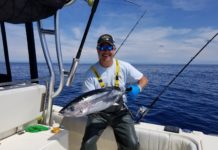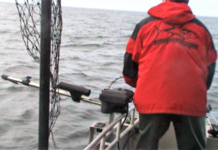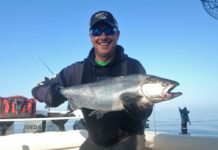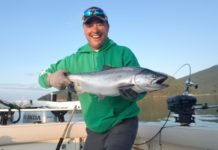
Close up of a tubeworm “bush,” which mines for sulfide in the carbonate substrate with their roots. The sulfide is metabolized by bacteria living in the tubeworms and the chemosynthetic energy produced sustains both organisms. It is a classic symbiotic relationship. Lophelia II 2010 Expedition, NOAA-OER/BOEMRE.
Did You Know?
Our knowledge of chemosynthetic communities is relatively new, brought to light by ocean exploration. The thriving communities associated with hydrothermal vents shocked the scientific world when humans first observed a vent on the deep ocean floor in 1977.
The discovery of hydrothermal vents and cold-water methane seeps gave us a new vision of primary production in the deep sea. The irony is that once scientists knew what to look
for, they went to other well-known ecosystems that
were rich in hydrogen sulfides, such as salt marshes, and found the same mutualistic association of chemosynthetic bacteria and animals that had stunned them in the deep vents.
No one had ever thought to look for them, but these communities were there all along.
Ecosystems depend upon the ability of some organisms to convert inorganic compounds into food that other organisms can then exploit (or eat!). In most cases, primary food production occurs in a process called photosynthesis, which is powered by sunlight. In a few environments, primary production happens though a process called chemosynthesis, which runs on chemical energy. Together, photosynthesis and chemosynthesis fuel all life on Earth.
Photosynthesis occurs in plants and some bacteria, wherever there is sufficient sunlight – on land, in shallow water, even inside and below clear ice.
All photosynthetic organisms use solar energy to turn carbon dioxide and water into sugar and oxygen. There is only one photosynthetic formula: CO2 + 6H2O -> C6H12O6 + 6O2.
Chemosynthesis is the use of energy released by inorganic chemical reactions to produce food. Chemosynthesis is at the heart of deep-sea communities, sustaining life in absolute darkness, where sunlight does not penetrate.
All chemosynthetic organisms use the energy released by chemical reactions to make a sugar, but different species use different pathways. For example, the most extensive ecosystem based on chemosynthesis lives around undersea hot springs. At these hydrothermal vents, vent bacteria oxidize hydrogen sulfide, add carbon dioxide and oxygen, and produce sugar, sulfur, and water: CO2 + 4H2S + O2 -> CH20 + 4S + 3H2O.
Other bacteria make organic matter by reducing sulfide or oxidizing methane. Chemosynthetic bacterial communities have been found in hot springs on land and on the seafloor around hydrothermal vents, cold seeps, whale carcasses, and sunken ships.
For More Information:
Chemosynthesis and Hydeothermal Vent Life, Multimedia Discovery Missions
Ocean Primary Production (pdf, 315 kb), Learning Ocean Science through Ocean Exploration: A Curriculum for Grades 6-12
Candy Chemosynthesis (pdf, 315 kb), Submarine Ring of Fire 2002
Sign up for the Ocean Explorer E-mail Update List.














